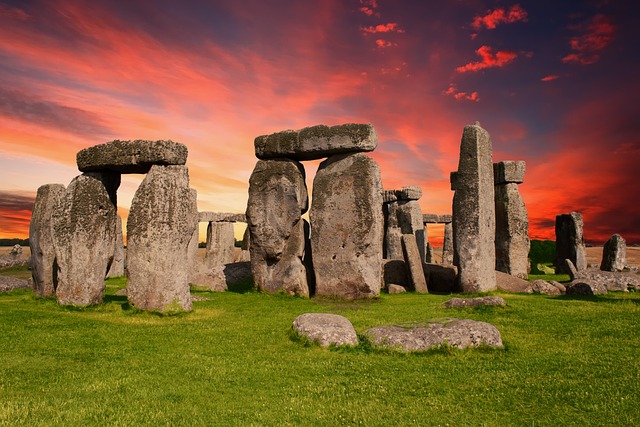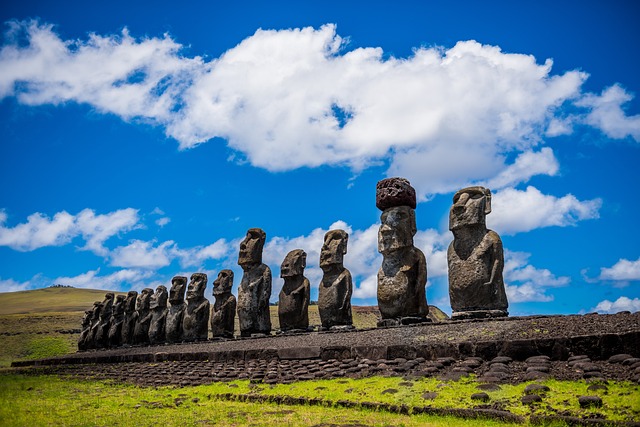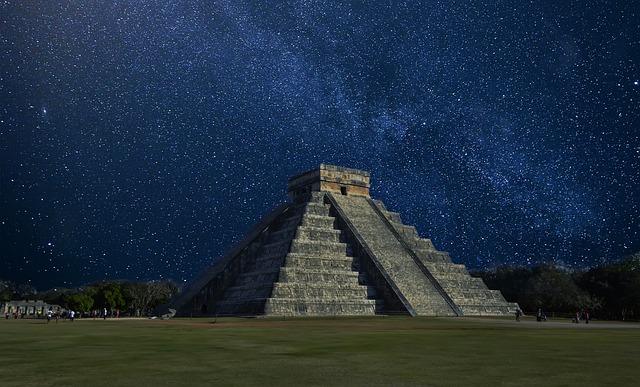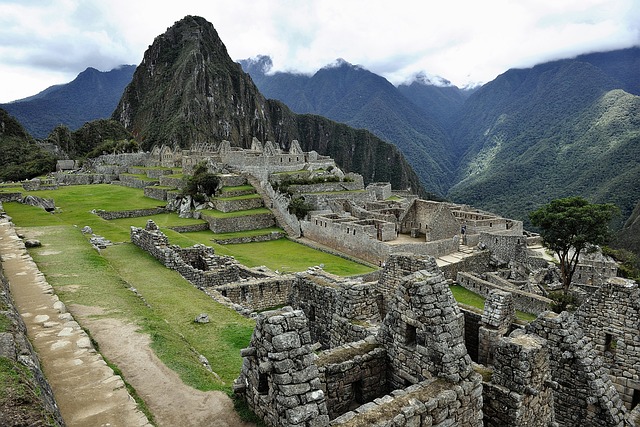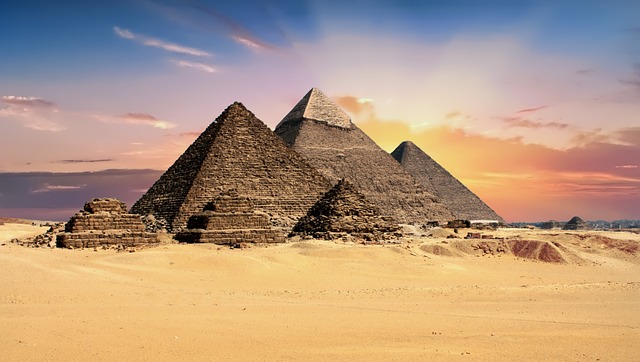Stonehenge, England: Ancient Rocks or Alien Teasers?
Stonehenge stands as one of the most intriguing prehistoric monuments, captivating the curiosity of countless individuals through the ages. Located on the vast Salisbury Plain in Wiltshire, England, this stone circle is a marvel of engineering and architecture that continues to baffle historians and archaeologists alike. With its massive sarsens and smaller bluestones arranged in a distinctive formation, Stonehenge serves as a testament to the remarkable capabilities of ancient societies.

Despite its fame and the extensive research conducted there, Stonehenge keeps most of its secrets well-guarded, raising more questions than answers about its true purpose and the people who built it. Some argue it was a celestial observatory, some say it was a sacred burial ground, and others propose it was a site for healing. What’s universally agreed upon is that they didn’t have cranes or construction hard hats back then, so its construction was no walk in the park. Its enduring legacy and the perpetual mystery surrounding it continue to enchant visitors from around the world.
Key Takeaways
- Stonehenge is a mysterious and architecturally sophisticated prehistoric monument found in Wiltshire, England.
- The true purpose of Stonehenge remains a topic of debate, suggesting it could have had astronomical, ceremonial, or healing functions.
- Despite being one of the most studied archaeological sites, Stonehenge maintains an air of mystery, fascinating visitors and researchers alike.
History And Excavation

Stonehenge: not just a pile of rocks, but a veritable puzzle from the past. The site tells a tale not only through its ancient stones but also through the soil, excavated thoroughly by those with a passion for history and hefty trowels.
From Neolithic to Bronze Age
Beneath the eerie skies of Salisbury Plain lies Stonehenge, a testament to prehistoric ingenuity erected some 5,000 years ago. Initially a simple earthwork henge, it got a major facelift around 2500 BC when the massive sarsen stones were hauled onto the site to form the iconic stone circle known today. Nearby burial mounds popped up like mushrooms in the early Bronze Age, adding the vibe of an ancient exclusive neighborhood.
Archaeological Research
“Who done it?” is the million-dollar question at Stonehenge. Since Dr William Harvey’s digs in the 17th century, archaeologists have been scratching their heads and the earth trying to piece together the Stonehenge puzzle. John Aubrey, the antiquarian gumshoe of his time, noted with delight back in 1666 the clues left behind by the Duke of Buckingham’s excavation. Brushes and dirt aside, the evidence gathered over centuries suggests a sophisticated understanding of astronomy and geometry by its creators.
Legends and Speculation
Don’t you love a good mystery? Stonehenge doesn’t disappoint. Was it a temple for sun worship, a heavenly observatory, or maybe the result of a Druidic ritual? None of the above, say the historians with a smirk. Romans shrugged their impressive shoulders at it, and though the Druid connection is popular thanks to some latter-day revivals, it’s like saying the iPhone was a Viking invention. So the true purpose of Stonehenge remains shrouded in mystery, waiting for the next theory to roll in, ideally without toppling any stones.
Architecture And Alignment

The stones of Stonehenge are like the peanut butter and jelly of prehistoric architecture—except they’re massive rocks rather than a lunchbox staple. They stand tall, they align with cosmic events, and they leave people scratching their heads and wondering just how ancient architects pulled off such an impressive and precisely aligned structure.
Mega Mysterious Alignment
Stonehenge’s alignment might seem as random as a teenager’s sleep schedule, but there’s a method to the madness. The Henge—that’s the ditch and bank combo—marks a prehistoric bullseye, while the central Trilithon horseshoe arrangement points the way like an ancient GPS. On the Summer Solstice, which is like the Super Bowl for celestial events, the Sun struts right through the center of the monument, probably feeling very flattered by the attention. Meanwhile, at the Winter Solstice, it sneaks a peek of the calm inside Stonehenge, aligning itself with the view from the center, much to the delight of the cold, camera-toting tourists.
Stellar Stones and Heel Stone
These sarsens aren’t just hefty; they’re thoughtfully placed, much like a feng shui expert arranges furniture, but with megalithic rocks. The Sarsens—Stonehenge’s iconic standing stones—are practically a prehistoric boy band, standing tall and strong in a perfect circle. They’ve got horizontal Lintels on top, locked in place with tongue-and-groove joints that have stood the test of thousands of years and countless English rainstorms.
Then there’s the Heel Stone. Say cheese because this solitary rock kicks off the Stonehenge experience by lining up with the Sunrise during the summer solstice like a rock star making an entrance. It’s a stone’s throw away—about 80 meters, actually—from the main circle because apparently, it likes its personal space. Whether it’s sending us a secret message or just photobombing the Sunrise, we are still trying to decode what the ancients had in mind with this peculiar placement.
Modern Interactions

Stonehenge, with its ancient allure, has not lost its ability to draw a crowd in modern times. From tourism to conservation, this megalithic masterpiece continues to bask in the limelight, entwining the past with the present-day hustle.
Tourism And Lively Gatherings
It’s not just old rocks, is it? Stonehenge stands proudly on the modern-day travel itinerary, beckoning visitors from London and far beyond for a selfie with history. This chunk of lithic fame is no stranger to camera flashes! On a typical day, you can see a parade of tourists donning bucket hats, following guides like ducklings, or posing for the obligatory photograph. However, Stonehenge is not only about quiet admiration; it’s a hotspot for vibrant gatherings. The winter and summer solstices see this World Heritage Site transform into a festival of sorts, complete with druids, revelers, and the odd individual convinced they’ve finally cracked ‘the Stonehenge code’.
- Annual Solstice Celebrations: A mashup of cultural rituals and Instagram-worthy moments.
Conservation Efforts
English Heritage doesn’t play when it comes to preserving this pile of beloved boulders! Their mission: keep Stonehenge rocking for millennia to come. Initiatives like the Stonehenge Riverside Project put brains to the task of understanding and maintaining the landscape around our favorite stone circle. However, let’s not forget the controversial plan that nearly caused a collective heart attack among historians – the A303 tunnel saga. The idea was to bury the road that runs a tad too close to the site, but critics were worried it might as well be a tunnel to the past, disturbing buried secrets. It’s a delicate dance of progress and preservation.
- Tuning the A303: An ongoing debate on whether roads can be both seen and not heard (or at least not ruffle archaeological feathers).
- Hands-on Heritage: Teams working tirelessly, ensuring future generations get to guess what Stonehenge was really for.

